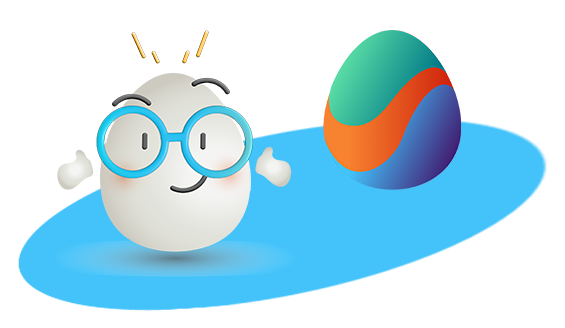Does talk of a Tweet that sold for almost 3 million dollars have you wondering what the heck a Non-Fungible Token or “NFT” is?
According to Business Insider “A non-fungible token (NFT) is a unique identifier that can cryptographically assign and prove ownership of digital goods.” That’s great and all… but are you still wondering what the heck a NFT is?👀
If you landed on this piece because you’ve heard about the NFTs that are spreading like wildfire and you are in need of having them broken down for you, you’ve come to the right spot.
What the heck is an NFT?
To start, it’s crucial to have an understanding of fungible versus non-fungible elements. An item that’s fungible can be replaced by something identical to itself - for instance, any dollar bill can be replaced by another dollar bill. An item that’s not fungible, is something that is irreplaceable and unique. Put simply, if you order a Peloton bike on their website, you’ll have no preference which machine is sent to you since they’re all the same exercise bike with the same value. Whereas the family heirloom your mother passed down to you is non-fungible as it cannot be replicated with a single item of an equivalent worth.
With those examples in mind, an NFT is a unique digital asset that is coded to set any item apart from another. These NFTs are digital tokens that provide proof that you own something and there is only one of these generated per associated item, making NFTs non-fungible.
Most often, these NFTs are associated with a unique piece of digital art or music or other collectible and you can easily share what you buy with the public since it is in digital form. Why would someone want to pay millions of dollars for an asset that can be downloaded or even copied by others? Because there is only one true original item, and the NFT brings built- in authentication as proof of ownership (although there is only one Mona Lisa painting, anyone can own a poster or postcard copy but those have no tangible value). These NFT owners not only hold “digital bragging rights” but ultimately hold a unique asset that may increase substantially in value just like any collectible. Some NFT’s also come with real world tangible rewards - like owning one may allow the holder to “unlock” other benefits offered by the seller such as attending a real world activity (like a concert or sporting event or access to a celebrity for an interview or web consult etc.)
How NFT’s work
To understand how NFTs function, it’s important to have a little knowledge of blockchains. A blockchain is a system of digitally recording information across multiple computers in a way that makes it difficult or impossible to change, therefore it’s the channel which cryptocurrency travels and is where a non-fungible NFT token is recorded. Each sale and purchase transaction is made public across this system of computers, making the activity transparent to every participant on the blockchain network.
According to Make Use Of, the most common form of NFT on the market right now is digital art. Artists ranging in popularity have made a profit and are using NFTs as a tool to sell their craft. In fact, the artist Beeple recently sold his work in digital form as an NFT for 69 million dollars (pictured inside the iPhone image above). Prior to this sale, the artist failed to sell a painting for more than $100. Although you might not be able to cough up $69 million, there are plenty of affordable NFTs being sold right now!
How to purchase a NFT
If you’ve found an NFT that’s caught your attention, the first step is to set your digital wallet up to hold your cryptocurrency. One of the most popular wallets is MetaMask which is a browser extension that can be used to either hold or convert your money into cryptocurrency. Most platforms accept the digital currency Ethereum as a form of payment. The cryptocurrency you use is dependent on what the NFT marketplace will accept.
Next up, you’ll choose the marketplace on which you’ll complete the purchase. OpenSea, Mintable, Nifty, Gateway and Rarible are all platforms which give you the ability to buy a NFT. Some are structured so the NFTs can be auctioned off, while other sites have a set price. With the purchase there is sometimes a “gas fee” (ie., a transaction fee) which is “the energy required to complete the transaction on the blockchain” (essentially you are paying for the computer power used to verify the transaction and keep the blockchain network running). The gas fee is based on the amount of traffic on the network at any given time (so it's usually best to buy in the early morning hours - like 3am - when there is less traffic).
If your payment is accepted, you can complete your purchase and will then receive your smart contract. This is a digital document which is essentially the terms and conditions of the sale between you and the seller.
Once you’ve taken ownership of an NFT, you can keep it as a collectible, display it so others can see it, and also list it for sale.
How to sell a NFT
On the other hand if you’re innovative and have made some interesting art, you can turn your asset into an NFT in just a few steps!
First, choose the marketplace which is most accommodating to the digital asset you want to sell and connect your digital wallet. As we mentioned earlier, there are some marketplaces that will allow buyers to bid on the NFT, others enable you to set a price, and some let you do both! Please note that some websites might include a service fee.
Now is the time to upload your digital asset. You’ll have to name the NFT, add a description and decide if you want to add a royalty every time the asset you created re-sells. The final step is to add your digital wallet and then pay the “gas fee” (if there is one).
Once complete, you can celebrate offering your first Non-Fungible Token for sale!
NFT Advantages
Creators earn more
When selling assets like artwork, music and more, a middleman is often needed to make transactions complete. NFTs remove these middle agents so an artist can directly interact with the customer allowing them to earn more of a profit from their work. One of the most unique aspects is creators are able to build a royalty into the NFT smart contract used for the sale so they can benefit from recurring revenue each time their digital asset is resold.
Rarity
Since only one NFT per asset can exist, most artists will likely have only a small amount of NFT’s. As the Finletics article explains, this factor makes obtaining ownership rare since the asset cannot be forged.
Potential to earn
Some investors who have purchased these NFTs have made large profits. Like any other investment, receiving your money back (or making a profit) is never promised. But many who have sold these tokens have made an impressive return. Collectibles have a long history of appreciation and the same could go for any form of NFTs.
Drawbacks of NFTs
Low barrier to entry
Sounds good, right? Well, not always. Since most people have access to the internet, anyone can upload anything as an NFT, which creates many opportunities in Business Insiders’ language for “really bad tokens”. This low barrier to entry demands that NFT investors are able to differentiate between what will increase in value and what will depreciate.
Environmental Impact
Although there’s large debate on the topic as many believe traditional market operations leave a larger carbon footprint, Money Crashers explains the negative implications that NFTs bring to the environment, noting that, “any record entered into the Ethereum blockchain takes significant computing, which requires the use of significant amounts of energy” making this new process not the best in terms of positive environmental impact. There are however improvements being made across the industry to address these issues.
Value is unknown
As Forbes reminds us, the value of each NFT is based entirely on what other community members are willing to pay. Unlike the stock market, indicators like technical, economic & fundamental factors are not relevant, making demand the sole pricing element. Ultimately, if no individual wants to buy your NFT, you could earn less or not be able to sell your asset.
The future of NFTs
It’s an exciting time to be an NFT. In the latest headlines, Wikipedia’s co-founder Jimmy Wales auctioned off an NFT of the first edit ever made on his site, which sold for $750,000, but was initially anticipated to only sell for $150,000. The musician and artist Grimes sold a collection of her digital art for almost 6 million dollars and Jack Dorsey’s first Tweet sold for 2.9 million dollars.
While clearly NFTs are bringing investment alternatives to the public, these tokens have the potential to transform other aspects of life. To name a few, Forbes writer Erik Sherman explains that one change involves business efficiency. Since NFTs are recorded on blockchain technology, which doesn’t need a central system to work, digital transfers could happen more quickly and easily. In other words, something like purchasing a home could be simplified using a NFT to transfer the property as the underlying blockchain technology can be used to execute and record the transaction.
Final word
This new alternative investment - NFTs - may just be getting started, but we expect they will not only grow as an asset class but evolve over time and provide new ways to confirm and transfer ownership. Whether or not it seems these assets will be a rewarding way to invest your money, we can all expect to see NFTs remain a part of the discussion in the news and throughout our social media channels for a long time to come!
Tags:
ResourcesJanuary 21, 2022






